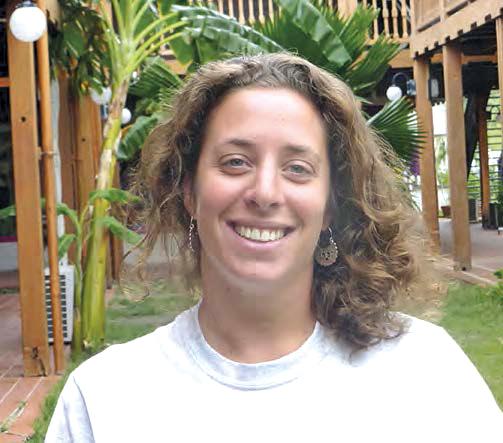If Tintamarre is known to be the second nesting site for marine turtles in Saint-Martin; the seagrass phanerogam of Baie Blanche (Tintamarre) represents in addition to the ecosystem services rendered, a major challenge for the conservation of sea turtles and more particularly for green turtles (Chelonia mydas).
It is indeed their main feeding area within the National Nature Reserve of Saint-Martin. The significant presence of these marine turtles within this protected site of the National Nature Reserve of Saint-Martin, contributes to the development of its frequentation by the public and by commercial operators offering the activity of "turtle watching".
This herbarium was the subject of the mission of Charlotte Bousquet, a student at the University of La Rochelle in master 2, in internship at the Nature Reserve from February to July 2016. At the end of an initial description of the herbarium ( 13 radials and 10040 m2) and current uses in this protected area (55 observations), the present study attempted to characterize the response of the herbarium subjected to different levels of anchoring pressure, within 3 areas : rear zone (high anchoring pressure), anchoring zone (intermediate anchoring pressure) and control zone (limited anchoring pressure).
Thus, the greater the anchoring pressure, the more the herbarium displays a degraded state of health, the mooring zone displaying an intermediate state of health.
This observation is accompanied by the identification of a certain number of problems linked to the frequentation and uses of this area. The deterioration of the state of health of this herbarium seems mainly linked to a lack of knowledge of conservation issues in the area, poor navigation practices, occasional overcrowding of the bay, risks for the safety of users and a recurrent problem of damaged moorings.
Various management recommendations have been formulated, in order to promote more reasoned and sustainable management of the area, in accordance with the economic and conservation challenges of this bay.
These results will also be taken up in the context of work carried out in 2017 and 2018, by a team of researchers from the International University of Florida, in order to characterize the existing interactions between Halophila stipulacea, and C. mydas, within the herbarium. from Baie Blanche to Tintamarre.
7,373 total views











No comments